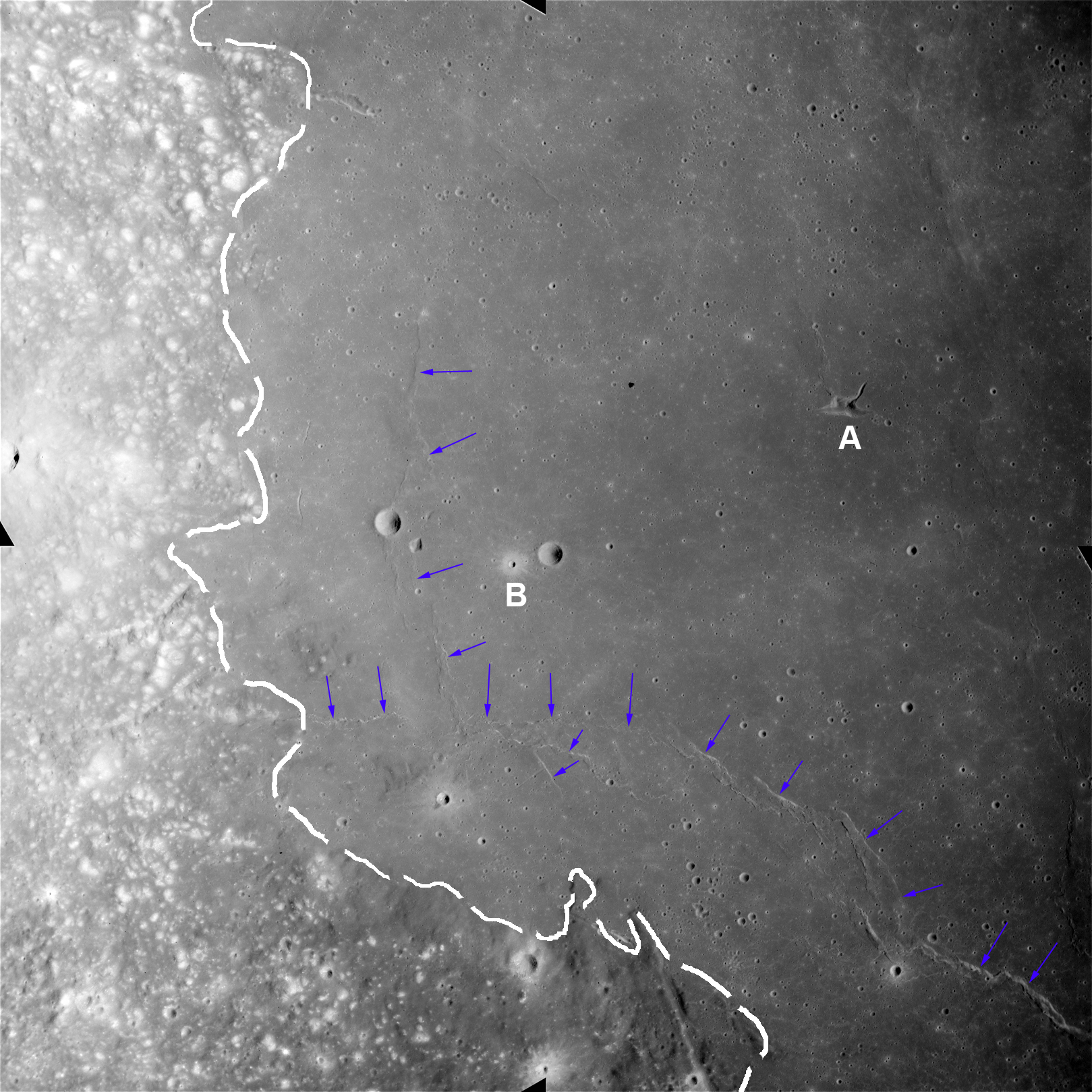
| Project Home | About the Scans | Browse Gallery | Image Map | Support Data | Resources | Ephemeris |
Featured Image - (06/10/2008)
A Mysterious Depression: Aratus CA
Figure 1, below, shows western Mare Serenitatis near the Montes Apennius and Haemus. The white dashed line illustrates the contact between the Serenitatis lavas and the older lunar mountains. Shortly after the mare lavas eruped and cooled, contractional tectonic forces generated wrinkle ridge features (marked with blue arrows). The north-south trending ridge system is known as Dorsum Gast, and the roughly east-west-to-southwest ridge system is known as Dorsum Buckland. The feature near "A" is an unusual depression named Aratus CA.
Figure 1. Annotated Apollo Image AS15-M-1130, showing the western edge of Mare Serenitatis, the contact between the mare basalts and the lunar highlands (white dashed lines), wrinkle ridges (blue arrows), a young fresh crater ("B"), and Aratus CA ("A") [NASA/JSC/Arizona State University].
What is Aratus CA?
Aratus CA is an unusual depression that found in western Mare Serenitatis (24.5°N, 11.2°E) and is about 9.5 km long, 3 km wide, and up to 400 meters deep. The four lobes of Aratus CA are named Vallis Lorca, Vallis Christel, Vallis Krishna, and Rima Sung-Mei. Extending northwest from Vallis Lorca is a wrinkle ridge named Dorsum Owen (approximately 20 km long). These features are labeled in Figure 2, below. You can even see layers of mare basalts in the walls of some of these depressions!
Figure 2. Close-up, annotated view of Aratus CA and surrounding lunar features. [NASA/JSC/Arizona State University]
How did Aratus CA form?
Although several scenarios could explain Aratus CA, most lunar scientists think that it is a product of both volcanism and tectonic collapse. Stratigraphy and cross-cutting relationships show that this unique depression was formed by multiple tectonic and volcanic events. Detailed geologic fieldwork by human explorers, enabled by the measurements from the forthcoming Lunar Reconnaissance Orbiter mission, will be required to definitively determine the geologic history of this fascinating lunar feature.
For more information: Greeley, R. (1976). "Photogeology of Aratus Ca, Mare Serenitatis". Abstracts of the Lunar and Planetary Science Conference 7 (2): 331.
Tweet
|
|
Space Exploration Resources |
|
 LPI LPI
|

